S&P 500: Is a Year-End Rally on the Horizon Against All Odds?
2023.10.24 06:26
The pain trade continues to be higher into year-end. We such a point in January, suggesting the 2022 correction was complete. Let’s review what I wrote, and then we will expand on why we believe the “pain trade” is higher over the next few weeks.
“From the bullish side of the ledger, the outlook for 2023 has statistical support for a positive outcome. After having a negative year in 2022, the markets were visited by “Santa Claus,” although very late, and the first 5-days of January turned out to be a positive return. As the table below shows, there are only a few periods in history where this has occurred, and each yielded positive returns in the following year.”
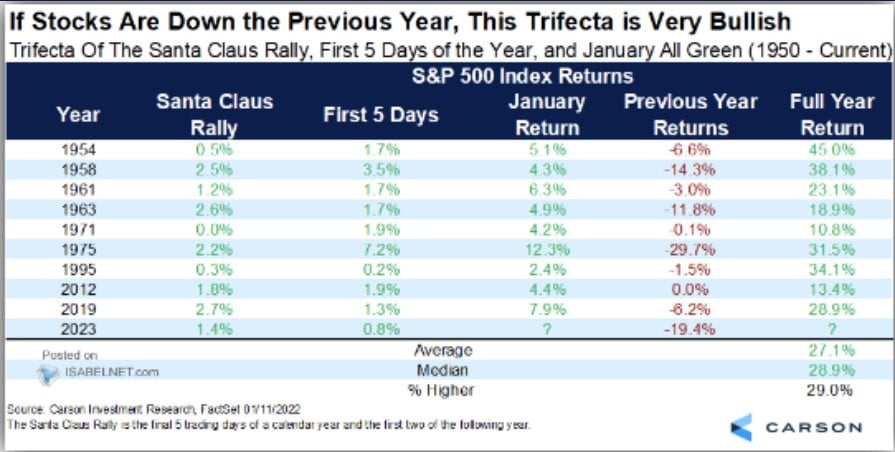
Since then, the market has rallied roughly 10% so far. However, as noted several times, this rally has not been broad-based, as denoted by the divergence between the market cap and equal-weighted indexes.
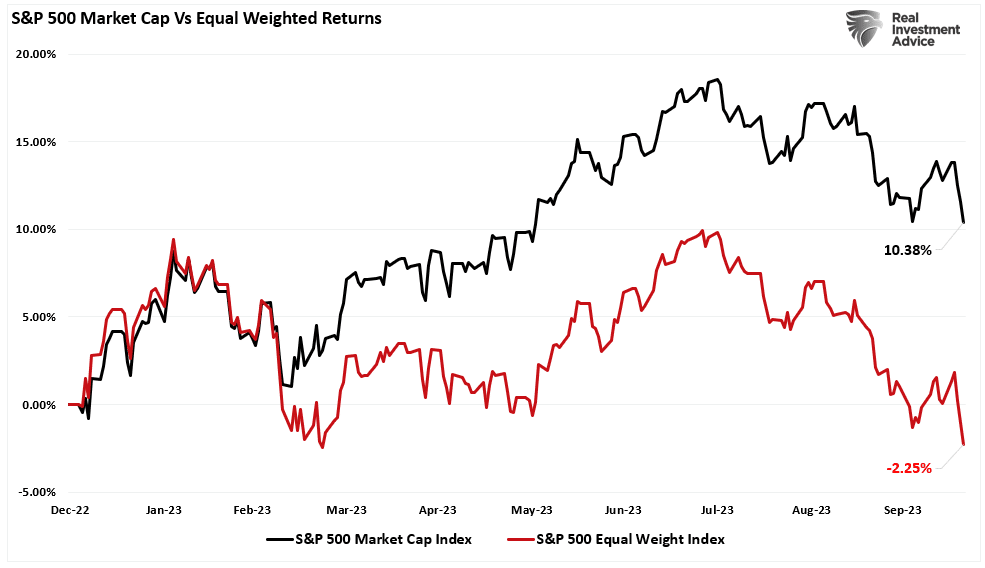
As we noted then, just because something has always occurred in the past does not mean it MUST happen this time. However, as investors, we must focus on statistical tendencies and invest according to the probabilities rather than the possibilities.
For example, the current sloppy trading environment over the last few months corresponds to the average pre-election year performance.
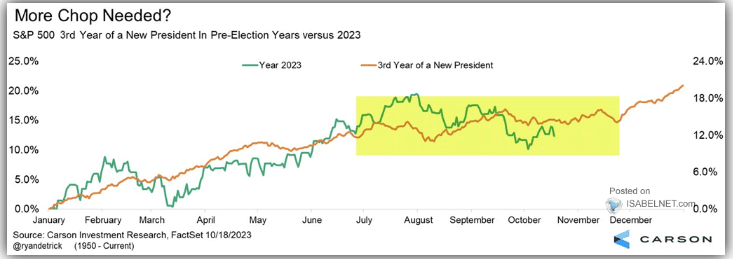 S&P 500 Performance in 3rd Year of President vs 2023
S&P 500 Performance in 3rd Year of President vs 2023
As we head into year-end, the historical probabilities of a year-end advance, particularly following summer weakness, outweigh bearish possibilities.
There are many possibilities bearish investors are betting on, which are unlikely to manifest themselves before year-end.
- Inflation is about to surge higher, needing a more aggressive Fed response.
- The economy will drop into a recession, as suggested by the inverted yield curves (shown below.)
- The housing market is going to crash.
- Unemployment is about to increase.
- Households are drastically cutting spending.
- Corporate earnings and profits are going to reverse.
 Percent of Inverted 10-Yr Yield Curve
Percent of Inverted 10-Yr Yield Curve
Each concern is valid, and many will likely manifest themselves in 2024. Notably, since most of this year’s market advance was valuation expansion, the markets must eventually correct to accommodate higher rates.
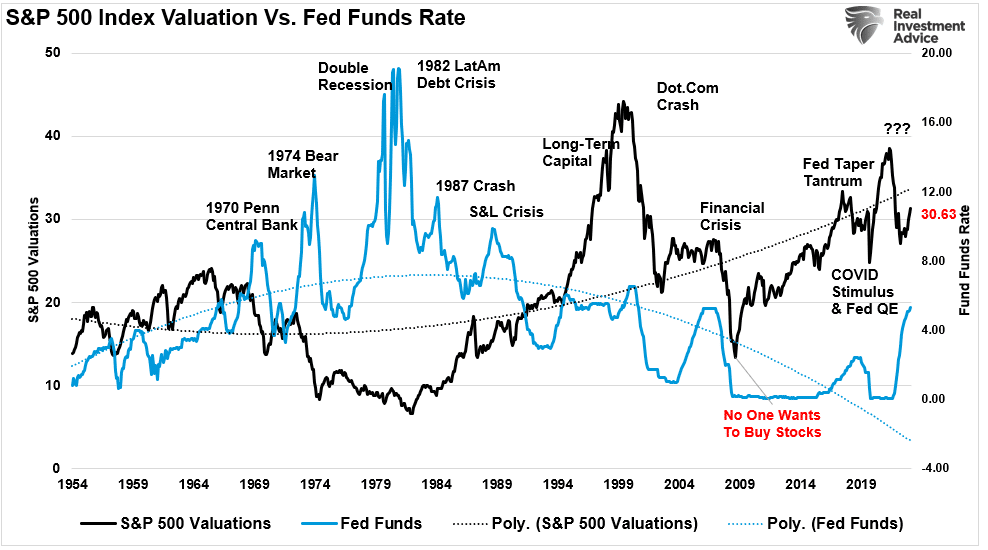 S&P 500 Valuations vs Fed Funds
S&P 500 Valuations vs Fed Funds
However, in the short term (over the next 1-3 months), the technicals are becoming more bullish, suggesting the “pain trade” remains higher.
The Pain Trade
It is called the “pain trade” because it is the opposite of how investors are currently positioned. Investor sentiment, as shown in the chart of net bullish sentiment (an index of both professional and retail investors), has become sufficiently bearish following the summer decline.
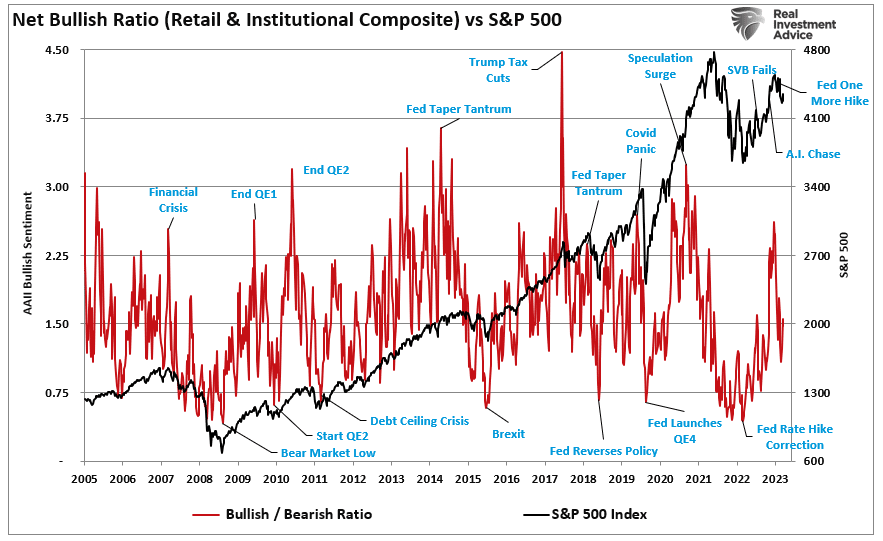 Net Bullish Ratio vs S&P 500
Net Bullish Ratio vs S&P 500
Furthermore, the short positions against the S&P 500 index have increased over the summer.
“Notably, with the rather large short position in equities built up over the last few months, a reversal of the summer weakness will lead to short-covering by portfolio managers, adding further impetus to the advance.”
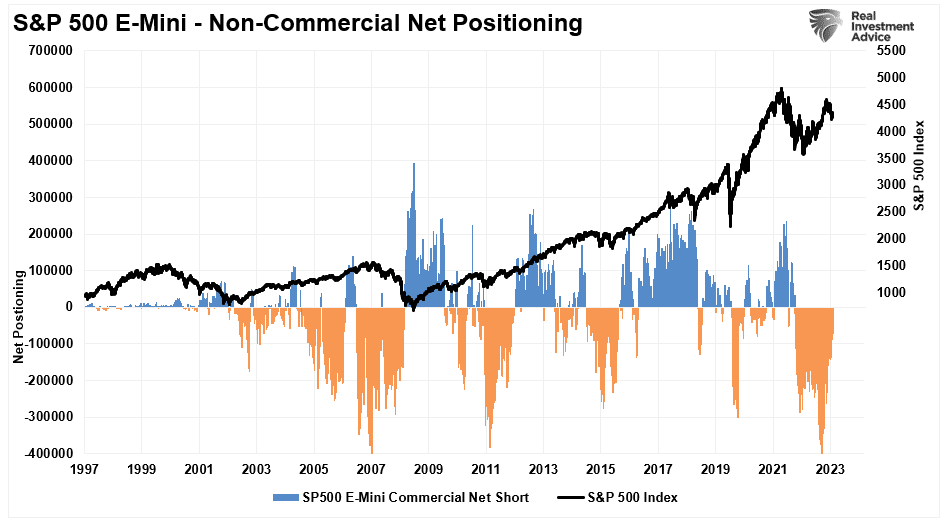
With sentiment negative, it becomes increasingly painful to fight the tape as the market rises. The “pain trade” reverses positioning as the market improves, pushing prices higher. As prices increase, the pain intensifies, causing additional positioning reversals and further price increases. The cycle repeats until it is exhausted.
The “pain trade” is usually swift and occurs over one to three months. Once that cycle is complete, the underlying fundamental and economic trends will retake control of the markets.
Such is where we are currently.
As of last Friday, the market corrected about 1/3rd of this year’s advance and is testing support from the October lows. Such also confirmed a retest of the technical breakout that occurred in May.
Over the next few months, rallies will likely be contained at the previous resistance of the 50- and 100-DMA. However, a break above those resistance levels would suggest a move higher into year-end.
With the market again short-term oversold, the “pain trade” is likely higher for now.
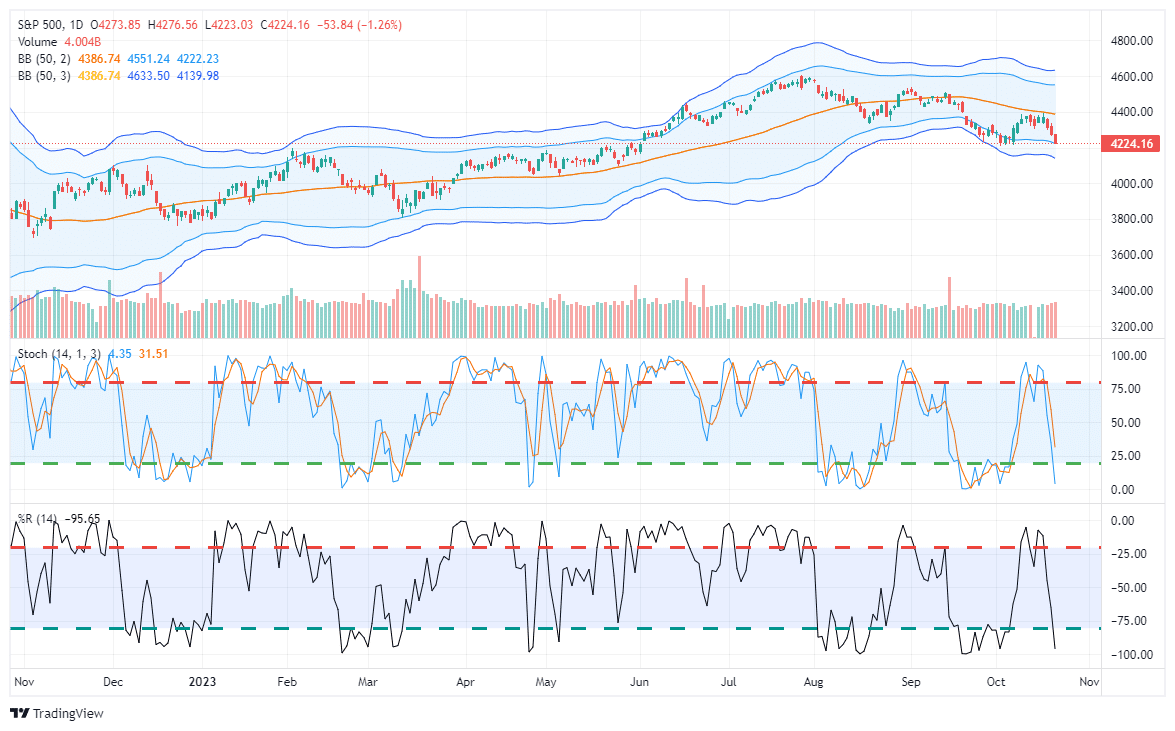
Understand my view. There is undoubtedly a risk that the market fails to hold its support levels. Such would suggest a further decline before the next rally. As is always the case, we must manage our risks accordingly.
However, there is additional support for a year-end rally.
Additional Support For A “Pain Trade” Higher
As we move into year-end, there is the function of “seasonality” itself. As we discussed in and as noted above, it is not uncommon for the first couple of weeks of October to remain weak.
However, three primary supports exist for a “pain trade” higher into year-end. The first and most obvious is the “Millennial Earnings Season,” which began in earnest last week.
“As is always the case, analysts have significantly lowered the “earnings bar” heading into reporting season. As noted in analysts are always wrong, and by a large degree. This is why we call it ‘Millennial Earnings Season.’ Wall Street continuously lowers estimates as the reporting period approaches so ‘everyone gets a trophy.’”
The chart below shows the changes in Q3 earnings estimates from February 2022, when analysts provided their first estimates. Given that estimates for Q3 have fallen from a peak of $236 to $187, a 20% decline, such should generate a high “beat rate” by companies. In turn, those “beats” will boost investor confidence, which will help fuel stock prices in the short term.
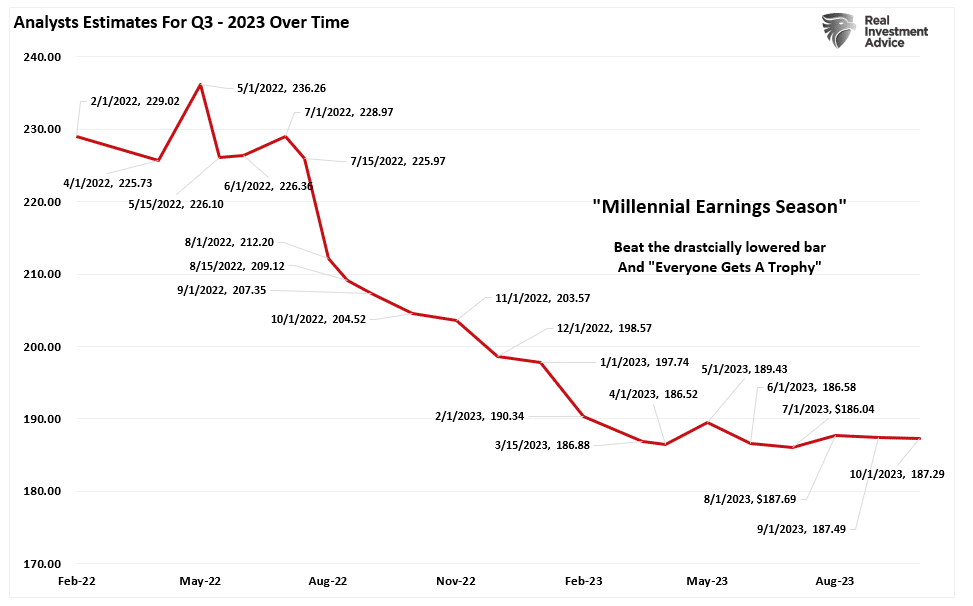
Secondly, the “stock buyback” window opens in November, which, according to Goldman Sachs, will add roughly $5 billion in daily buying to the markets. This buying will be primarily centric to the mega-capitalization companies. Not surprisingly, when share repurchases are increasing, so do asset prices.
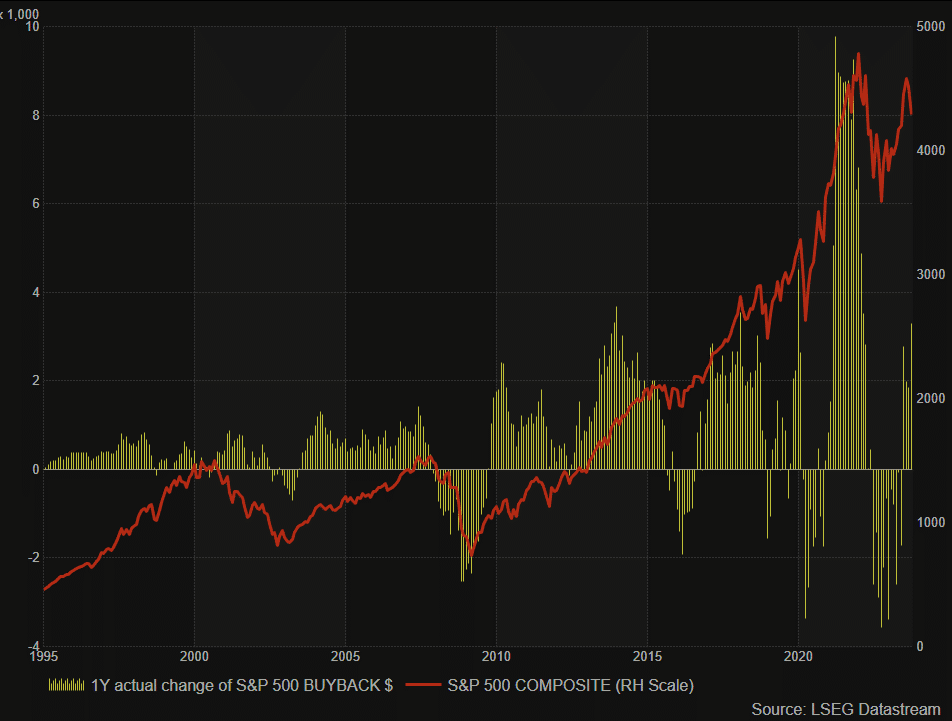
Lastly, professional managers are lagging behind the broad market performance this year. As noted above, this is due to the bifurcation between the top-7 stocks and the bottom 493. This performance lag sets up a potential chase by asset managers to catch-up by year-end. With professional managers underweight equity allocations currently, the increase in exposure will support higher asset prices in the near term.
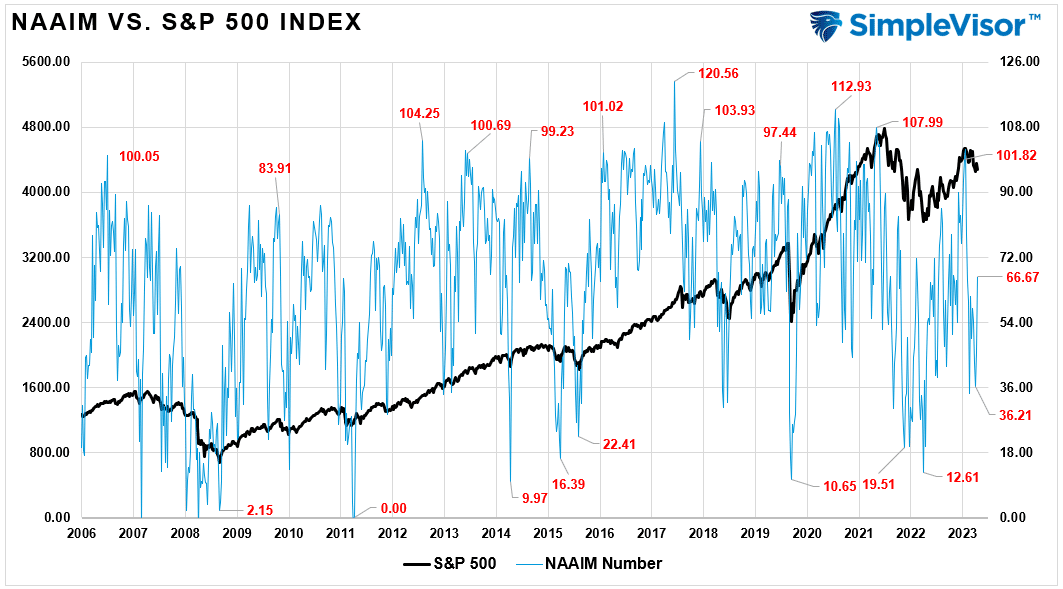
As noted above, while there is short-term support for a “pain trade” into year-end, that trade will likely become painful for the bulls in 2024.
The Contrarian Trade
While there is support for the current “pain trade,” the rally still has many risks.
- While the Fed is on hold from further hikes, rates remain elevated, and it is reducing its balance sheet.
- The rate hikes of last year have yet to impact the economy fully.
- Economic growth is slowing.
- Earnings and profit margins are still historically deviated from long-term growth trends.
- The massive support of fiscal stimulus is no longer available.
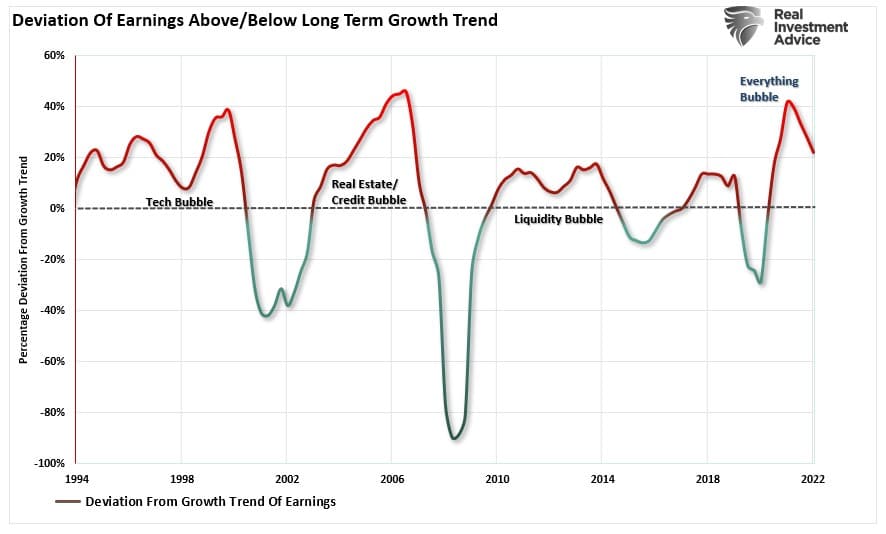 Earnings Deviations Above/Below Trend
Earnings Deviations Above/Below Trend
While there is support for a “pain trade” into year-end, it is important to remain cautious until the markets declare themselves.
Of course, the market dynamics should change markedly once we get into next year. While the bulls may have the advantage now, it is likely that by the end of 2024, the bears will again be on the prowl.






